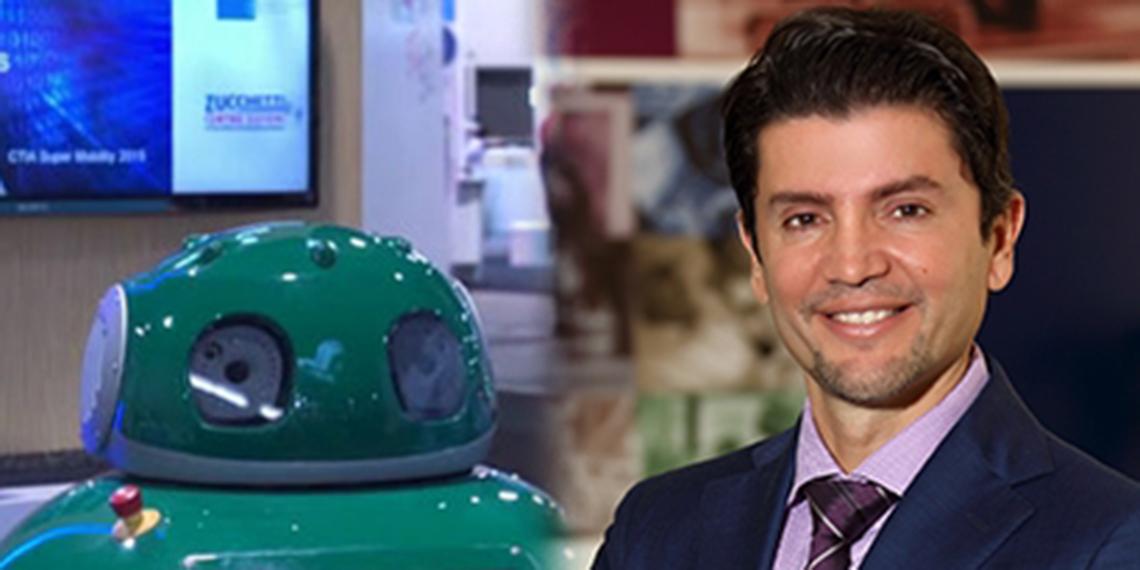Tarek Saadi, Head of Ericsson GCC and Pakistan: 5G is the optimal choice for 'smarter' robots
During the Renaissance, Tuscan local Leonardo da Vinci experimented with robotics. Light years ahead of his time, he designed a mechanical lion to impress the King of France. It was a roaring success. Now, the sparks of discovery are flying again, with new innovations - welcome to the robotics renaissance.
Tuscany is home to a thriving robotics industry and in partnership with Ericsson, The BioRobotics Institute and Zucchetti Centro Sistemiare leading the way. The former - part of Pisa's university Scuola Superiore Sant'Anna - is a research center investigating different applications for robotics and bioengineering. The latter was established in 1985 as a software house, before focusing on robotics and industrial automation systems in the 2000s.
""I firmly believe that Italy is a nation that welcomes new technologies"", says Fabrizio Bernini, CEO of Zucchetti Centro Sistemi. ""Robotics, even now in its infancy, has an important value within society and Italians are already beginning to feel it.""
The collaboration fuses Ericsson's cloud and communications knowledge, with Zucchetti Centro Sistemiand The BioRobotics Institute's in depth understanding of robotic systems.
By combining their expertise, the partners aim to develop robots for industrial applications that can be controlled from anywhere in the world and navigate by themselves. These 'smarter' robots would be able to interact with their environment in a human-like manner, identifying obstacles and working out how to avoid them in real-time.
To make this possible, the controlling functionality (or the brains) of the robots has to be moved to the cloud, in order to utilize its massive computing power. This requires the development of an innovative system architecture, which allows the robots to 'talk' to the cloud, via Ericsson's network infrastructure.
Commenting on the project, Tarek Saadi, Head of Ericsson GCC and Pakistan said: ""5G is central to the project. In order for the robots to be able to interact with their environment in real-time, huge amounts of information will have to be transferred instantaneously. With lower latency and higher bandwidth than other forms of wireless connectivity, 5G is the optimal choice. We expect that 5G subscriptions will reach 20 Million by 2022 in region Middle East and North East Africa.""
The benefits of the technology are extensive. Smarter robots can carry out a greater number of tasks in the manufacturing process, allowing their human counterparts to be employed in other areas. This enhances safety - particularly where dangerous chemicals are involved.
Perhaps most significantly, however, smarter robots enable increased industrial automation, both in manufacturing and agriculture. Also known as 'smart manufacturing', the majority of production processes could be remotely controlled and monitored in the cloud, minimizing the need for plant infrastructure and dramatically reducing costs.
Wirelessly connecting machines and sensors allows industries to use the data collected to monitor, analyze and predict. The result is optimized processes and increased efficiency, making it possible to effectively implement just-in-time production and lean manufacturing.
This enhanced awareness and control of processes also offers environmental benefits. Resources - such as water in agriculture - can be used more efficiently, and energy consumption can be reduced. The partners are also investigating how solar power can be harnessed by industries to power automated processes.
From the field to the factory, applications for cloud robotics can be found in a wide range of industries. And with the partnership's research breaking new ground, the possibilities for the future are hugely exciting.










